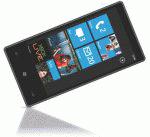
Windows Phone 7, Microsoft’s big return to the smartphone stage after Windows Mobile’s gradual decline and demise, turns two today, according to a tweet by Joel Belfiore, Microsoft’s head of Windows Phone product definition and design. So I thought it would be fitting to take a look back at Windows Phone 7′s life up until now, and what the mobile OS has or hasn’t done for Microsoft so far.
On October 21, 2010, the first Windows Phone 7 handsets officially went on sale in New Zealand, Australia and parts of Europe and Asia. 10 launch devices brought the mobile OS to users, made by HTC, Dell, Samsung and LG (early highlights of the lineup included the LG Optimus 7, Samsung Omnia 7 and HTC HD7), spanning 60 carriers in 30 countries, and expanding to more in 2011. Early sales were promising in some markets, and even generated lines according to an AT&T spokesman, but overall failed to impress, with only 40,000 total units reportedly sold in the first day of U.S. availability.
In December, Microsoft Corporate VP of the Mobile Communications Business and Marketing Group Achim Berg revealed in an interview posted to Microsoft’s official blog that Microsoft had sold over 1.5 million devices – but that was to carrier partners, not sales through to customers, which meant there was no telling how much of that was sitting on store shelves or in stock storerooms. Berg hedged against potential criticism in that interview, saying that Windows Phone 7′s “numbers [were] similar to the performance of other first generation mobile platforms.”
The news didn’t improve terribly in January the following year, when Microsoft announced passing the 2 million mark about 10 weeks after its Windows Phone 7 launch, but again, those numbers were to retailers, not overall sales to customers. By most accounts, users seemed pleased with the OS, but growth rates still looked to be a considerable challenge.
A month later, in February 2011, Nokia and Microsoft announced a broad partnership, with the aim of using Nokia’s hardware expertise to boost Microsoft’s struggling mobile OS. The idea seemed sound: Nokia was enjoying flagging fortunes in the worldwide handset market, having trouble competing with Android and iOS device gains, and Microsoft needed a focused hardware partner it could work closely with to both guide the future Windows Phone’s software design, and also make sure device/OS integration was as tight as possible. Here are three crucial bullet points from the press release announcing the arrangement:
- Nokia would adopt Windows Phone as its principal smartphone strategy, innovating on top of the platform in areas such as imaging, where Nokia is a market leader.
- Nokia would help drive the future of Windows Phone. Nokia would contribute its expertise on hardware design, language support, and help bring Windows Phone to a larger range of price points, market segments and geographies.
- Nokia and Microsoft would closely collaborate on joint marketing initiatives and a shared development roadmap to align on the future evolution of mobile products.
It was a bold move on both sides, and one that seemed on the surface to have at least some potential to help both companies rally in the increasingly competitive mobile ecosystem. But it would take until October before consumers got any inkling of what kind of hardware we’d see from the partnership, with the official unveiling of the Nokia Lumia 800, and another month after that before it would ship to consumers. The Lumia 800 was fairly well-received by reviewers, and included Windows Phone 7.5 “Mango,” a significant update that brought a number of features to the OS users thought were missing in the original release. Mango also made it to a lineup of other devices from manufacturers besides Nokia, though by this time, it already seemed like some of Microsoft’s other hardware partners might be losing interest, owing to its special relationship with Nokia.
Nokia Windows Phone 7 sales failed to impress, and Microsoft remained mum on the subject during the first conference call it had following the Mango device launches, which wasn’t reassuring anyone. Then, in June, Microsoft essentially dealt Windows Phone 7 a killing blow, saying that it wouldn’t be possible to upgrade devices running Windows Phone 7 to Windows Phone 8. They announced Windows Phone 7.8 at the same time, which would bring some functionality from the newer OS to older devices, but the damage it did to existing hardware sales was evident in Nokia’s most recent earnings, as it only sold 2.9 million Lumia devices, with its smartphone sales overall taking a sizeable blow.
In July 2012, a Nielsen report put Windows Phone 7′s market share relative to other smartphone operating systems at just 1.3 percent, and predictions from analysts at the time only saw it rising to around 4 percent by end of year. Windows Phone 8 will prove important for Microsoft in terms of its ability to gain ground on the other mobile operating systems out there, and at least one analyst firm believes Windows Phone will still become the second most popular smartphone OS by 2016. As for Windows Phone 7, it will live on in 7.8 updates pushed out to existing owners of Lumia and other devices, but for all intents and purposes, it’s on the path to oblivion. But despite not taking the world by storm, Windows Phone 7 may have paved the way for a return to mobile prominence for Microsoft, even if it’s hard to see that happening based on the current state of affairs.

